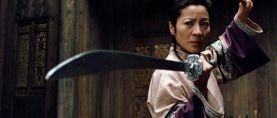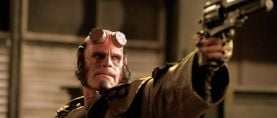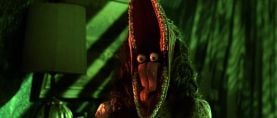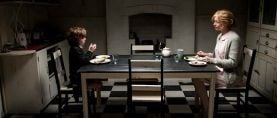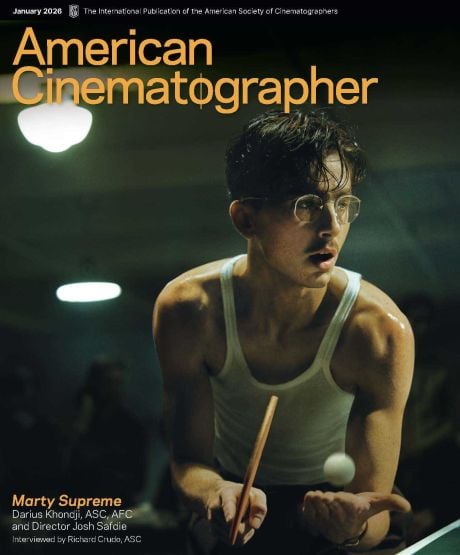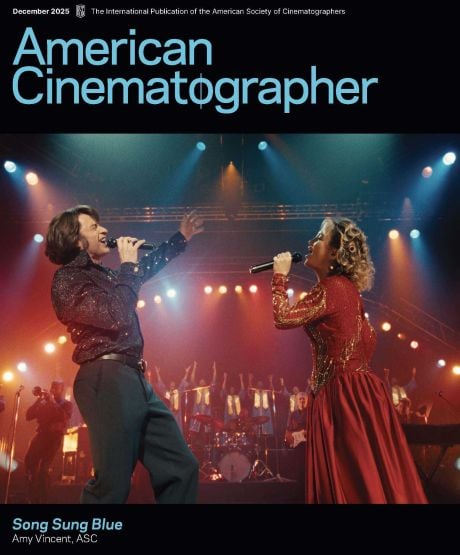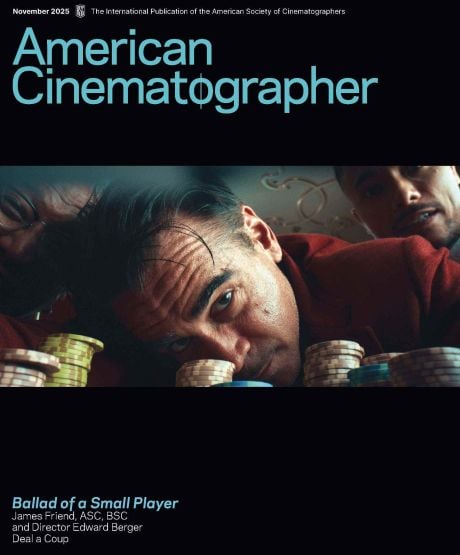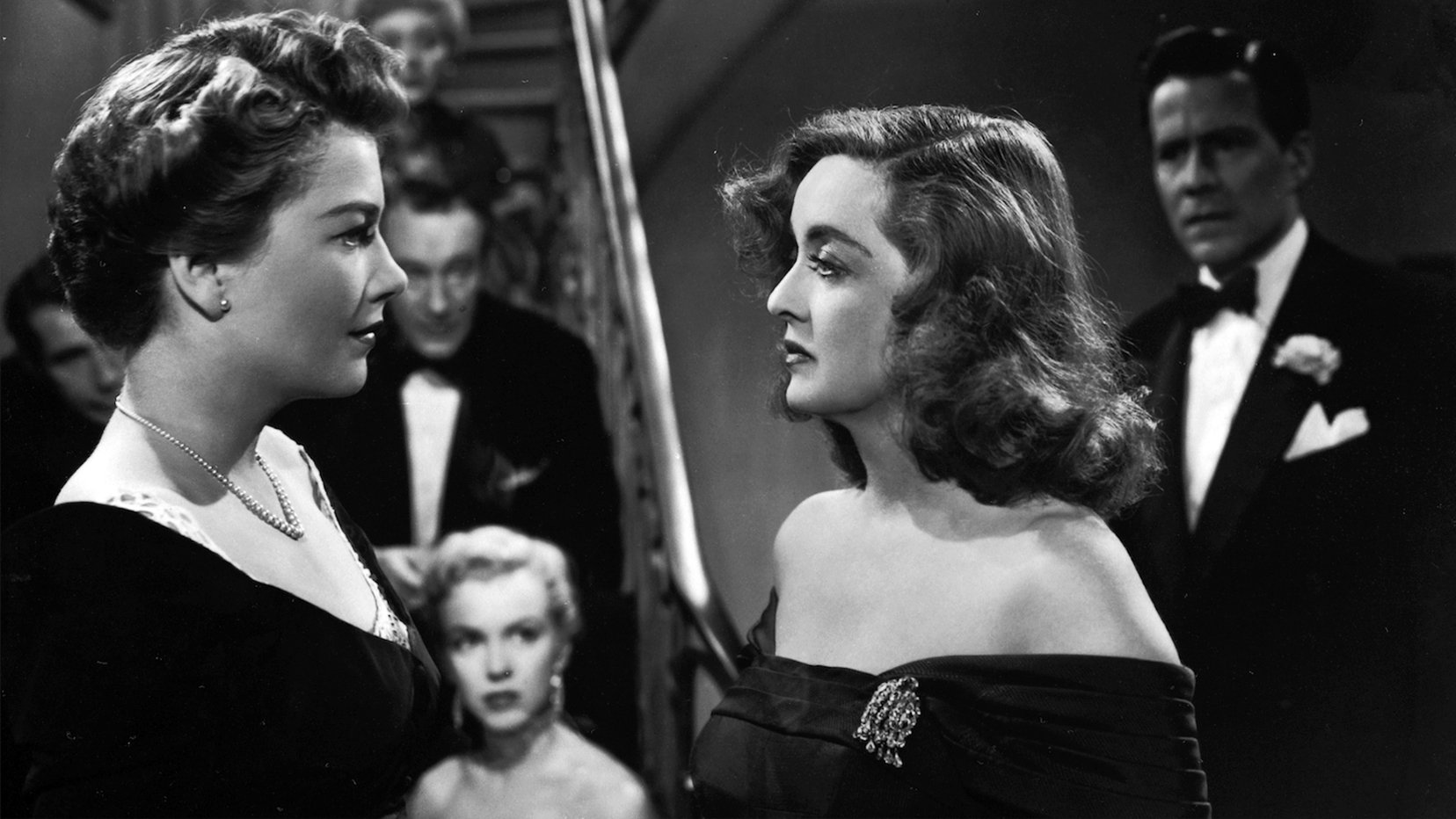
The Filming of All About Eve
Deft, subtle cinematography by Milton Krasner, ASC lends class and authenticity to Fox's leading 1950 Academy Award contender.
This article originally ran in AC Jan. 1951. Some images are additional or alternate.
Among the pictures of Academy Award-caliber to come out of Hollywood during 1950, All About Eve is sure to be a leading contender for honors in several departments. Written for the screen and directed by Joseph L. Mankiewicz, Eve is his picture; still, deeper analysis will reveal the contributions of others who made this success possible — the acting, art direction and especially the photography by Milton Krasner, ASC There is evidence throughout the picture that uncommon deep understanding and cooperation existed between Mankiewicz and his director of photography Krasner, which enabled Mankiewicz to imbue the picture with the vitality, warmth and sparkle that easily makes it one of the top pictures of the year.
Members of the distinguished cast give perhaps their best performances in many moons, due first to Mankiewicz’s meticulously detailed script and his superb direction, and last but not least to the artful cinematography of Krasner which, even to many within the industry, may go relatively unnoticed because of its subtlety. Here is photography that never once calls attention to the artifices of the camera. All too often the vital part photography plays in a great picture goes unnoticed simply because the story and individual performances are so absorbing; the very subtlety of the camera work which has contributed to the story’s compelling qualities makes them loom more brilliantly than might have resulted with less inspired cinematography.
All About Eve is Krasner’s third picture in a row for Mankiewicz. Functioning as a team, once shooting preparations began, Krasner and Mankiewicz plotted the photography of Eve in a number of huddles that saw them make location scouting trips together to San Francisco, and later to New York to select theatre exteriors against which so much of the action takes place.
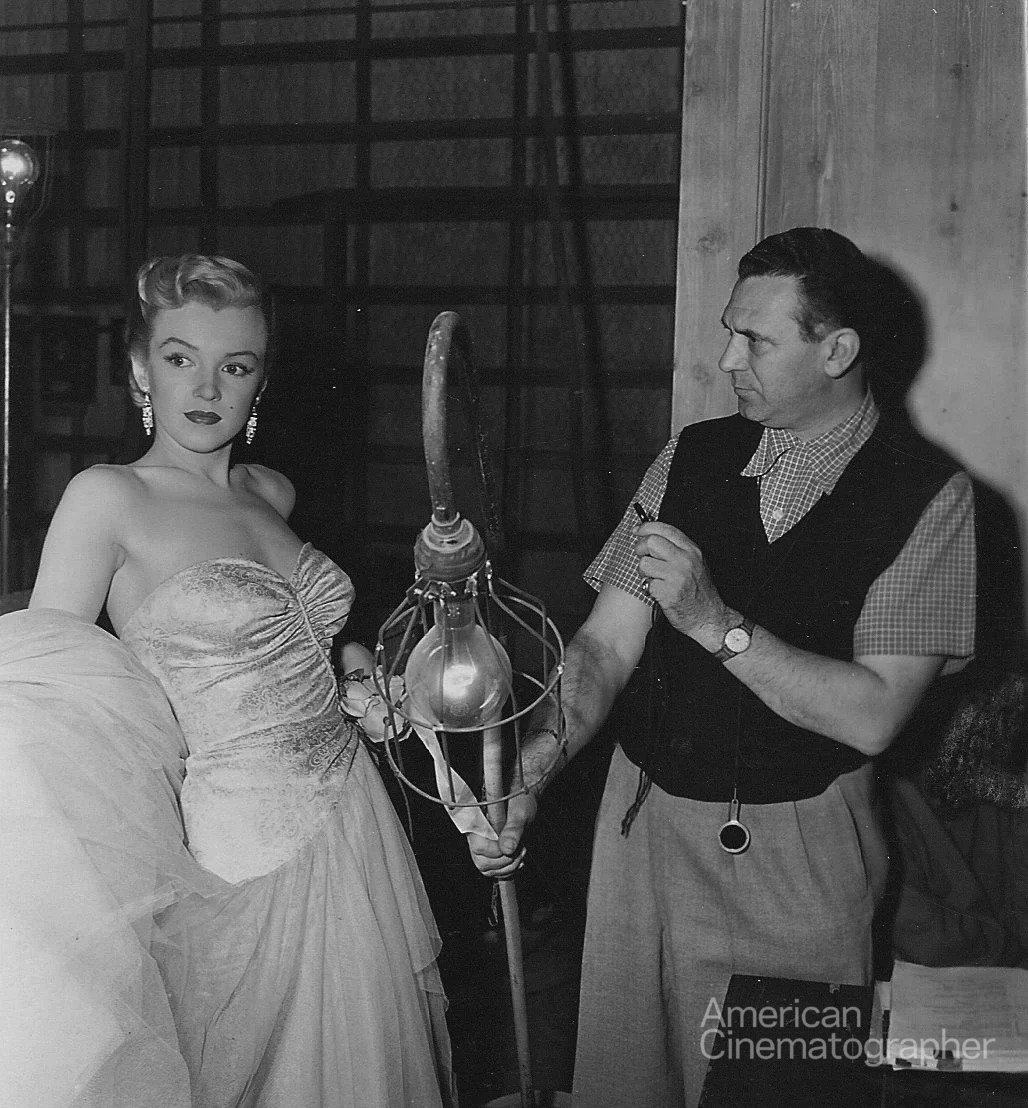
On March 15, with the script virtually completed and the most pressing production problems settled, the two flew to New York. There, using doubles for Bette Davis and Celeste Holm, they shot the exterior of the New York theatre which would tie in with the scenes to be shot later in the Curran Theatre in San Francisco. The exteriors of the “21 Club” and Eve’s Park Avenue apartment were also photographed as establishing shots for interior scenes and for background plates for scenes to be shot later at the studio. To light these scenes, Krasner used portable Colortran lighting units, and the footage was intensified at time of processing to bring it up to full value.
When shooting the night exteriors in front of the John Golden theatre, Krasner received unusual cooperation from New York City police. In one instance, when the company was shooting after midnight, an officer displaying knowledge of photography, suggested to Krasner: “You haven’t much depth in the background, here. How would you like to have those neon signs in the distance lighted up?” And when Krasner agreed, the officer dispatched another to the task of inducing store and café owners a block away to light up their signs.
Because the story has a New York locale, it was necessary to find a theatre there whose lobby closely resembled in detail that of the Curran in San Francisco where most of the picture’s vital shooting was to take place. The John Golden Theatre was selected, and here scenes and background plates were shot which later were to match up with similar shots made in the Curran lobby.
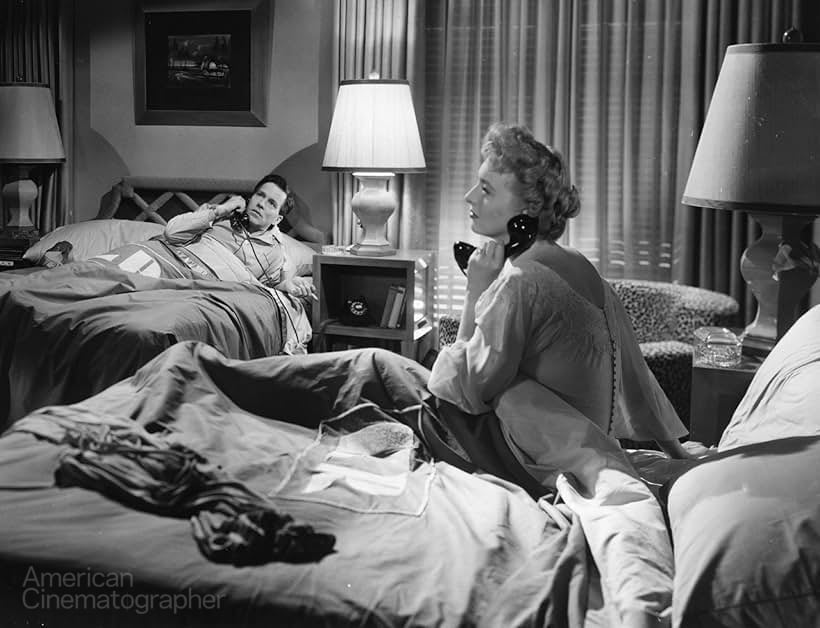
Shooting at the Curran theatre began on April 11, as scheduled. The theatre echoed with activity as Krasner and his camera crew prepared it for shooting. Electricians were everywhere rigging lamps and laying cables, but long before this, Krasner, his gaffer (Vaughn Ashen) and Mankiewicz had paid a visit to the theatre to scout the power source. It was desired to shoot scenes in the theatre without having to bring up from Hollywood a generator to supply power for illumination. Krasner and his gaffer found the power lines running into the Curran inadequate to supply the needed voltage, and it became necessary to find a means of getting additional current. Together they checked adjoining buildings and happily found they could bring additional lines into the Curran from an adjoining theatre, but not before considerable time had been spent lifting manhole covers in the street and checking underground power cables, transformer capacities, etc., to make sure that no power failure would result in the midst of shooting.
The next important step was to lay a sturdy platform over a section of the theatre’s orchestra seats at stage level to provide unhampered working space for Krasner’s camera and the Junior Crane on which it was mounted. An interesting point is Mankiewicz’s preference for this crane as a camera mount, regardless of size of the sets. As a result, practically every scene in the picture — location shots as well as interiors — was shot with the camera mounted on a Junior Crane. All the necessary camera movements for the theatre interiors had been carefully planned and charted by Krasner and Mankiewicz when earlier they had scouted the location. Now as shooting began, it was merely a matter of referring to these carefully laid plans and following them to the letter.
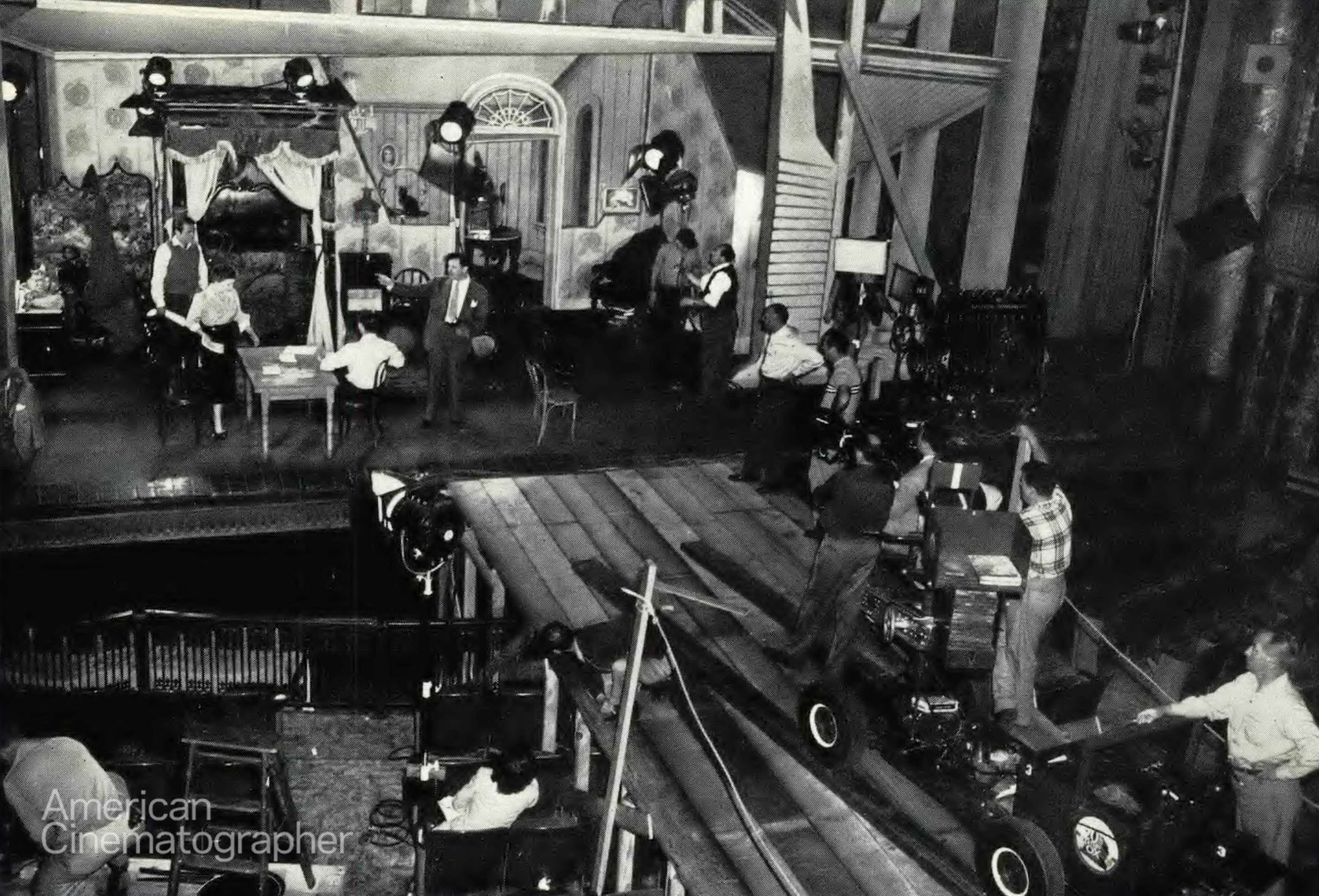
Before shooting the important scenes in the lobby of the Curran, it was necessary to erect special scaffolding to hold the lights, a matter that presented no small problem because the crew was not permitted to drive nails into the lobby walls. The problem was solved by securing two-by-sixes between the walls near the ceiling using wedges protected by felt. Small illumination units — baby kegs, small spots, etc. — were then suspended from the beams, which supplied the predominance of light from overhead. There were few if any light units on the floor. These interiors were the scenes that had to match those made earlier in the Golden theatre in New York. Obviously this called for careful matching of lighting, and camera angle by Krasner so that any small difference in the architectural detail of the two locations would be minimized if not obscured.
The important early scenes in the picture in which Anne Baxter meets Celeste Holm in the alley outside the theatre, were actually shot in the alley behind the Curran. In order to film these night scenes in daytime, Krasner arranged to have the whole area covered with tarpaulins to keep daylight from the scene. Afterward, appropriate lighting was set up to create the low key illumination necessary to the illusion of night time. Here, Miss Baxter set the tempo and timbre of her performance which thereafter holds the spectator spellbound — a performance which is given added luster on the screen thanks to masterly lighting and skilled camera technique.
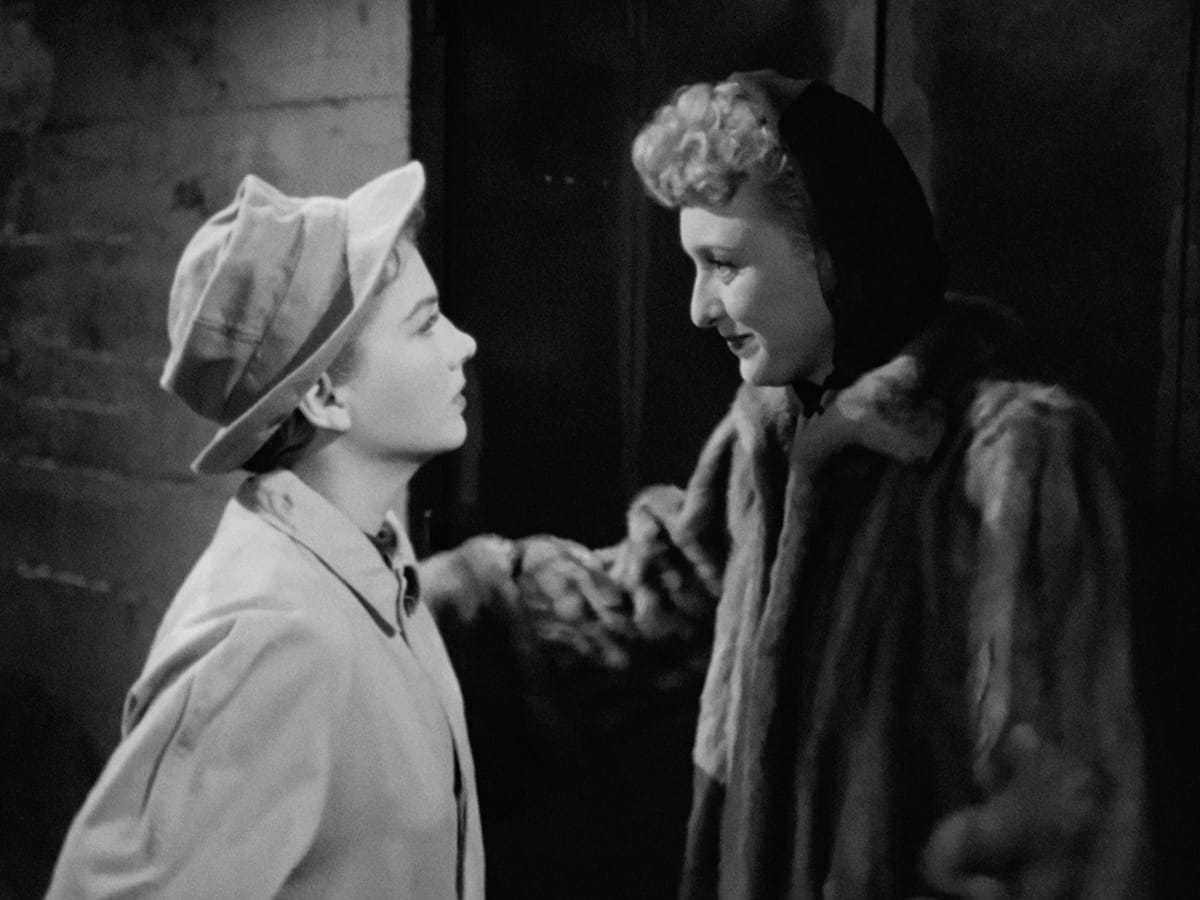
Anne Baxter, of course, is not the star of the picture — there are five, including Bette Davis, whose personality and charm is also seen in a new light through the lens of Krasner’s camera.
With the San Francisco location shooting wrapped up, the company returned to the studio where it settled down for more than a month of solid work. Here the studio had reproduced in infinite detail interiors of New York’s famous Stork Club and Club 21. While the flawless detail is the result of both producer Zanuck’s and Mankiewicz’s unrelenting pursuit of perfection, a big measure of credit is due art director George Davis, whom Krasner rates as one of the very few art directors who always keeps the cameraman’s problems in mind when designing sets. It was Davis’ understanding of photographic and lighting problems that eased the way for Krasner in all of the Eve interiors, because Davis had provided the unobtrusive openings through which Krasner’s set illumination was to play so effectively — all this, of course, the result of cooperative huddles at the time the set was being planned.
As related earlier, Krasner previously had shot background plates for five scenes which now were ready to be photographed on the sound stage. Background plates are scenes filmed at locations remote from the studio, then projected on a background screen in the studio with the players performing before them. The camera is synchronized with the background projector so that the shutters of both machines open and close simultaneously.
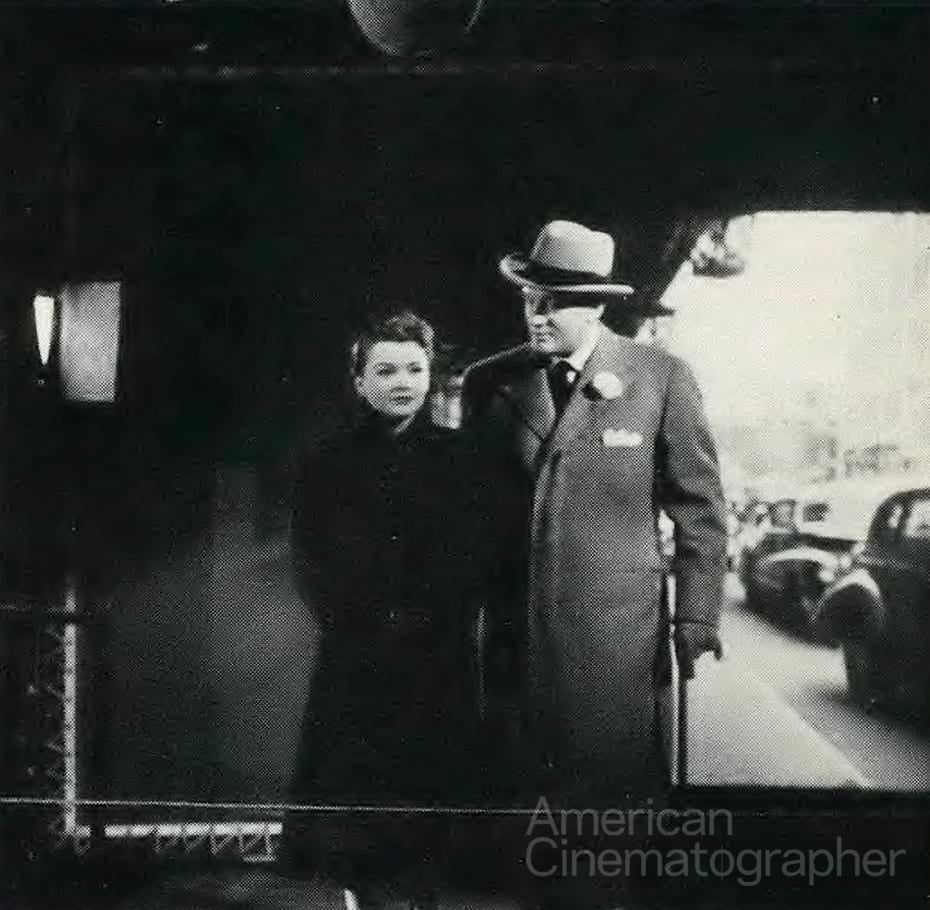
One of these background projection scenes had to do with Anne Baxter and George Sanders walking down a New York street toward the camera. In front of the BG screen a treadmill was placed and the two “walked” on this as the street scene unfolded on the screen at the rear. The final screen result is highly effective, thanks to the careful matching of the set lighting and camera angle by Krasner.
After a year in preparation — the last six months on a full production scale — the picture was finished. Over 100,000 feet of negative film had passed through Krasner’s camera and more than double that amount of positive film and sound track printed to get the fourteen thousand feet in which the story of Eve is told.
Krasner’s solid cinematographic technique first attracted the attention of Mankiewicz when he was assigned to film the latter’s House of Strangers for Twentieth Century-Fox. So effectively did these two artists work together that they were teamed again on Fox’s No Way Out. All About Eve makes the third Mankiewicz-directed picture to which Krasner has lent his camera artistry and he is currently awaiting the start on a fourth. Krasner set his first award-winning stride when earlier he photographed Three Came Home for Fox, for which he has received the American Society of Cinematographers’ “Picture Of The Month” award for the month of April. Come next April, he may also have won an Oscar for All About Eve.
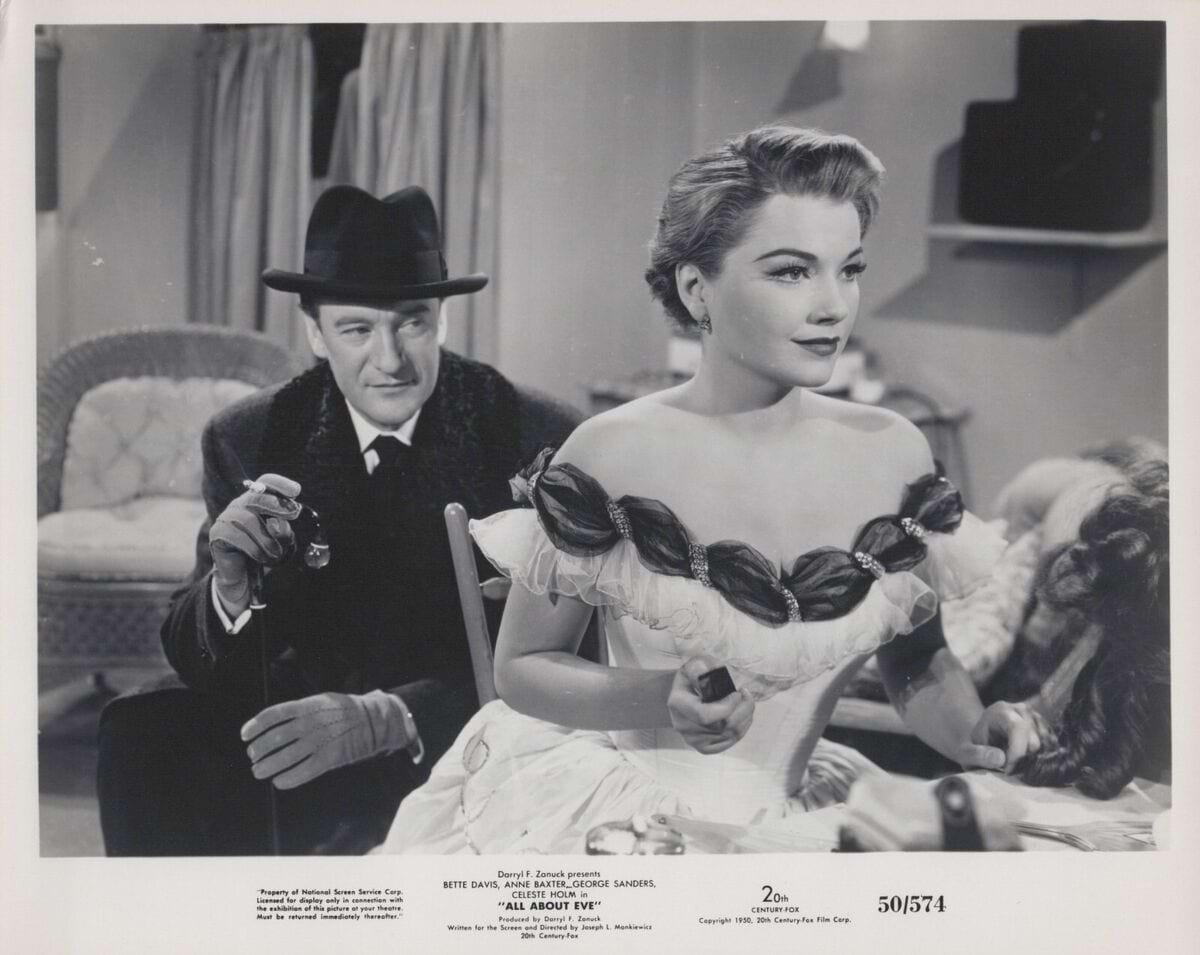
All About Eve won the Academy Award for Best Picture, and Krasner did earn an Oscar nomination for Best Cinematography, Black-and-White, but the camera prize went to Robert Krasker, BSC for The Third Man.
Learn much more about Krasner here.
If you enjoy archival and retrospective articles on classic and influential films, you'll find more AC historical coverage here.
